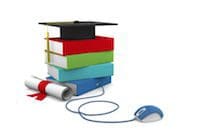How to Drive Traffic To Your Site With Easy SEO Techniques You Can Do Yourself
 It used to be that you could build it… and they would come. But with millions of web sites and billions of pages on the web… you have to optimize your site as best you can in order to compete. And, in today’s economy, it pays to have a well-optimized site… particularly if you want to reap the rewards it will have to offer in 2012 and beyond.
It used to be that you could build it… and they would come. But with millions of web sites and billions of pages on the web… you have to optimize your site as best you can in order to compete. And, in today’s economy, it pays to have a well-optimized site… particularly if you want to reap the rewards it will have to offer in 2012 and beyond.
I want to share with you some of the most important SEO techniques you can perform yourself to increase traffic to your site, increase your customer base and improve sales. Most people, when their web site is complete, race to get their site indexed by Google and the other search engines. But if your site is not fully optimized, the information gathered by the search engines for their organic results may not be exactly what you want. So, before you index or re-index your site, here are a handful of suggestions for you to consider.
I’m still convinced that each page’s Title, Description and Keywords are the most important thing you can focus on when optimizing your pages. Obviously the content on each page is very important as well. But even more important is the correlation between the content and the Title, Description and Keywords. So, here’s a quick list of things you should do – and not do – to optimize your web site.
– Don’t use your web address in the Title; you should, however, use your registered business name, business name, phone number, special offers or other call to actions (CTAs).
– Keep your titles to less than 65 characters, otherwise it will most likely be clipped when displayed in a search engine result.
– Upload a robots .txt to the root of your server/web site.
– Always use a site map page on your site – even if there’s just a link to it.
– Custom design your 404 Error Pages to make sure users are directed to a page where they can get help if they’ve entered an incorrect web address.
– Always use Cascading Style Sheets to design your pages and don’t embed color, size and font tags in your page’s code.
– Use standard hyperlinks wherever possible and use the Title Tag; links in buttons or JavaScript may not be recognized by search engine crawlers.
– Make sure to include your most important keywords in and image’s ALT tag.
– Use H1-H6 tags for page and other headings. You can always change the way H1-H6 headings display using CSS.
– At the bottom of every page on the site, use menus as text links, and make sure that every page links to every other page. These links can be as valuable as back links from other sites!
– Keep the size of your pages as small as possible, and make sure images are never larger than 100KB.
Finally, analyze your competitor’s site(s). Look at their Titles, Descriptions, Keywords and Content and see what they are doing right or wrong – and look for ways that you can improve your site so you can be more competitive in today’s economy – and be positioned to capitalize on greater web site traffic.
Remember, Web Page Optimization isn’t just about getting higher page rankings and better search engine listings… it’s also about selling more once you’ve driven traffic to your site!
